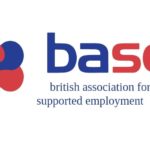In collaboration with The University of Sheffield My Life, My Choice Project we are raising employers’ awareness of and confidence in employing disabled young people. This project follows on from a wider research project focused on employment in the lives of people with learning disabilities.
The disability employment gap
The disability employment gap has remained a tricky problem for successive governments. Currently, the employment rate for disabled people in the UK is 50.7% (compared to 81% for non-disabled people). Worse still, only 5.9% of people with learning disabilities are in employment.
The causes of the disability employment gap for disabled young people include:
- a lack for support to prepare young disabled people for employment, including adults around young people having low aspirations;
- a complex benefit system that can deter disabled young people and their families from thinking about employment
- inflexible workplaces
- hostile work cultures where it is difficult to ask for reasonable adjustments
Barriers to employing disabled young people?
Employers also see barriers to employing disabled young people. These include:
- their fear of getting it wrong/saying the wrong thing with a young person
- a lack of access to clear information
- the fear that they will incur extra costs
- worries that employing a disabled person will take more time
- worries that if the job doesn’t work out for the young person, the employer might be vulnerable to legal action
- lack of support systems within SMEs but also larger employers.
What does the law say?
Of course, the law offers protections for disabled workers that employees must adhere to under the Equality Act, 2010. Employers must not discriminate against disabled employees at any stage of the process, from recruitment to redundancy. Employers must make reasonable adjustments to meet the needs of disabled employees. Failure to do so is the biggest cause of workplace discrimination.
There is often confusion about what counts as a ‘reasonable adjustment’. Often people think about physical access like ramps but reasonable adjustments can include a whole host of accommodations including:
- flexible working patterns
- mentorship
- specialist equipment e.g.: speech recognition software or a standing desk
Strong business case?
As well as being unaware of their legal duties, employers are also sometimes unaware of the strong business case for employing disabled people. This includes:
- research evidence that demonstrates that disabled people make reliable, punctual and talented employees
- research that demonstrates that once an employer has employed a disabled person they are likely to do so again
- adjustments for disabled people can often have benefits for all employees
- supporting people with disabilities to live more independently is associated with lower overall costs to the state.
Employers often want top tips for working with disabled people. This problem with this approach is that every disabled person, regardless of their disability, is different from everyone else – after all, everyone is unique. So, our top tip is that you talk to the disabled employee in order to find out what adjustments they need to make the workplace accessible to them.
What are the features of an accessible workplace?
A good workplace for disabled people is a good workplace for all. Some common features of an accessible workplace include:
- an open environment where employees are listened to;
- an environment where employers are proactively seeking employees’ views;
- an environment where information is shared clearly and accessibly
- an environment which is physically accessible to all
Good practice examples
- Gamuda
Gamuda, a large construction company in Kuala Lumpur, committed to ensuring that 1% of the employees would be people with autism
They trained their existing staff to support colleagues and adopted ‘circles of support’ to support employees with autism. LINK TO MORE INFORMATION
- Supported Internships
Supported internships are a structured study based programme offered in partnership between an education provider and an employer for young people aged 16-24 who have an Education Health and Care Plan. The programme lasts for a minimum of six months and the aim it for young people to take up paid work at the end of the programme with the support of a job coach.
- Job Coaching
Utilising job coaches has been proved to be successful in supporting people to find and stay in work by building good relationships with both the disabled person and the employer. They can offer onsite training, support employers to deal with difficult situations and deliver training to other employees. Job coaches now need to need to adhere to National Occupational Standards including
- enable prospective job seekers to raise their aspirations for work
- working with job seekers to develop and agree development plans that meets their employment, personal and financial needs.
- engaging with employers to enable them to understand the benefits of developing processes and practices to recruit and retain a diverse workforce
Supported employment charities such as Enable can also provide information on Job Coaching.





